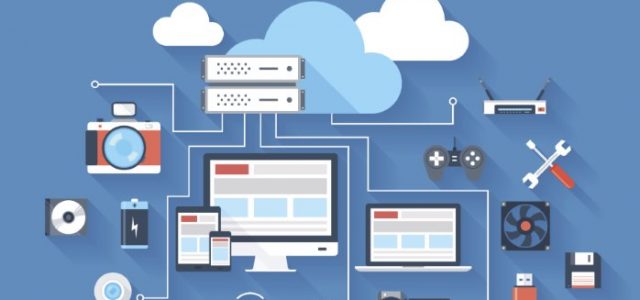The rise of the Internet of Things (IoT) is now increasingly visible and ubiquitous thanks to the constant presence of interactive fitness trackers, intelligent thermostats, and autonomous vehicles among many other sensors. Such technologies are considered to be the future because they do a good job at making the things we have around us smarter and interactive.
In fact, with the rise of the IoT expected to gain pace during the coming decade, we are no longer required to settle for dumb tools and can now look forward to the era of enchanted objects.
The sensor technologies that we all talk about are just a small part of what makes things “smart” in the IoT. Connecting these devices and sensors is what turns these isolated segments of technology into a flourishing network that can generate pools of data with valuable insights.
The telecom sector across the globe is gearing up for managing the phenomenal increase that we will witness in data traffic across all networks. I’m not just referring to the data consumed by people using these networks, but also to what is expected to be consumed by devices ready to interact with each other.
With the IoT revolution almost upon us, there is a huge potential for telecom operators to jump in the revenue streams and foster the growth of this technology even further. Since telecom operators are major IoT players, they will have to revamp their current infrastructure, partnerships, and business models to ensure that this surge is met with unprecedented infrastructure.
I recently attended the Huawei Pre-MWC 2018 Media and Analyst Briefing and was pleased to have the main presenter at the event Edward Fan, who is VP marketing for Huawei’s carrier group, over for a detailed interview.
The Opportunity for Telecoms
The most important questions that most stakeholders want to know is the opportunity that telecoms currently have. This opportunity along with the need for specific action right now needs to be presented in a more thorough manner for everyone to understand.
Edward Fan mentioned in his presentation that IoT has currently crossed all borders, and is at a more efficient stage than ever. With the infrastructure and the technology having proven their efficiency, it is evident that telecom operators should stand up to match this advanced demand.
To facilitate this increased demand and to ensure that the efficiency of the IoT is widespread, telecom operators and other partners need to contemplate about investing in the NB-IoT or Narrow Broadband IoT. It has been forecast that there would be around 150 million connections for NB-IoT by the end of the year, and if this figure is anything to go by, the future is definitely all for the growth of the Narrowband Internet of Things.
Moreover, the implementation of the IoT across industries has also added to the premise that the right opportunity is now. Companies have started using the IoT for reduced costs and increased revenues, and are garnering quite a lot of success in this regards.
The right opportunity for operators to latch onto this challenge is now, because the world definitely is moving on, and the infrastructure to ensure that this development goes as per plan lies in the hands of the IoT leaders of today.
Route to Take This Opportunity
Telecom operators would want to have a path which they can follow to get the most out of this planned move towards the future. As more and more cases get converted and incubated from ideas to trial, it is evident that telecoms have shown their interest in this technology.
According to Fan, there are two main methods or paths that operators can implement to reach the desired aim; the first path is to go through the ideology of “big connections” and to sell as many SIM connections as possible. The second path would be to go “beyond the connection” and to sell more services than before. The latter path may sound lucrative, but it comes with a unique set of challenges. One of the challenges that will come with going beyond connections is that operators will need to work with numerous partners for delivering solutions to end consumers.
Progress of the IoT
The concept of the IoT at work in the average human life and everything surrounding it can best be illustrated through the progress of proper examples. The Smart City program, which I have talked about in detail previously, is already underway, and a big head start has been made in this regard. More than 1,000 programs are in progress to ensure that the concept of the Smart City gets undertaken with the help of the IoT.
Along with the Smart City, the concept of Smart Industry, where numerous metrics could make operations and production even more efficient, is also underway. More than 60 percent of organizations have accepted the use of the IoT within their systems. The culture of the industry and the economy it operates in will have a great impact in increasing this growth even further during the days to come.
The most important example of the IoT in work and one that concerns us directly is the concept of Smart Life. Around 40 percent of all electronics have applied the use of the IoT in their setup, which eventually means that using electronics has become way easier than what it was in the past.
Growth Pattern of Telco
Source: Huawei
Stepping onto the IoT bandwagon presents many growth opportunities for telco operators. These growth opportunities can be grouped according to the total number of IoT connections, the telco revenue from IoT services, and the IoT revenue as a percentage of the total revenue for telco operators. We will study these factors and will see the potential for telco operators using the IoT.
Telco IoT Connections
The current number of IoT connections for telcos are ranked at 0.6 billion. This figure is expected to rise to 3.8 billion by 2020, and would further reach a momentous height of 35 billion in 2025.
Telco IoT Revenue
The revenue for telco operators from the IoT is also expected to grow over time, as the use of the IoT becomes even more common. Telcos currently generate $8 Billion, but this figure is expected to rise to $400 Billion by 2025.
IoT Revenue/ Total Revenue
The percentage of IoT revenue to total revenue of a telco operator will vehemently increase as we move into the future. The figures are expected to increase to more than 20 percent in 2025 from the 0.6 percent share for IoT based revenue that telco operators currently experience.
Cases of Implementation
The implementation of the IoT in our everyday lives is very much in process, and we can already see important progress in this regard:
- Smart Water Metering: Smart water metering has ensured that 2.3 billion tons of water is metered on a yearly basis. This metering has reduced leakages by up to 3 percent, and has reduced costs up to $4.7 million every year.
- Smart Gas: Around 2.2 billion m cube of gas is metered on an annual basis. This process has increased accuracy by 5 percent and reduced costs by $3.6 million per year.
You can visit Huawei’s booth at the Mobile World Congress 2018 to gather more information in this regard and to see the advancements towards a more coherent and smart living ecosystem.
The data for this article has been garnered from a conversation with Edward Fan, VP marketing for Huawei’s carrier group and keynote presentations at Huawei Pre-MWC 2018 Media and Analyst Briefing. I captured this content on behalf of Huawei during an invite-only in London at the Savoy hotel. Rest assured, the text and opinions are my own. I would like to thank Edward Fan and Huawei for giving me the privilege to visit their Pre-MWC in London.
Article by channel:
Everything you need to know about Digital Transformation
The best articles, news and events direct to your inbox
Read more articles tagged: Featured, Internet of Things








